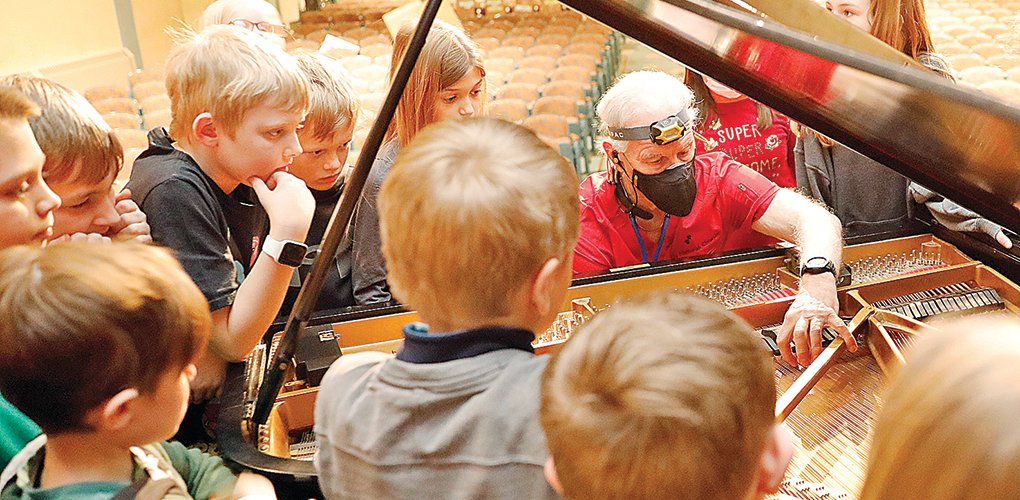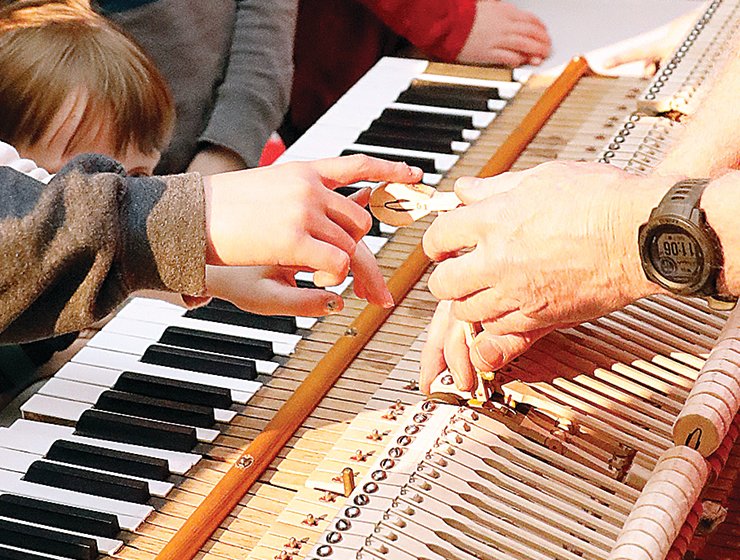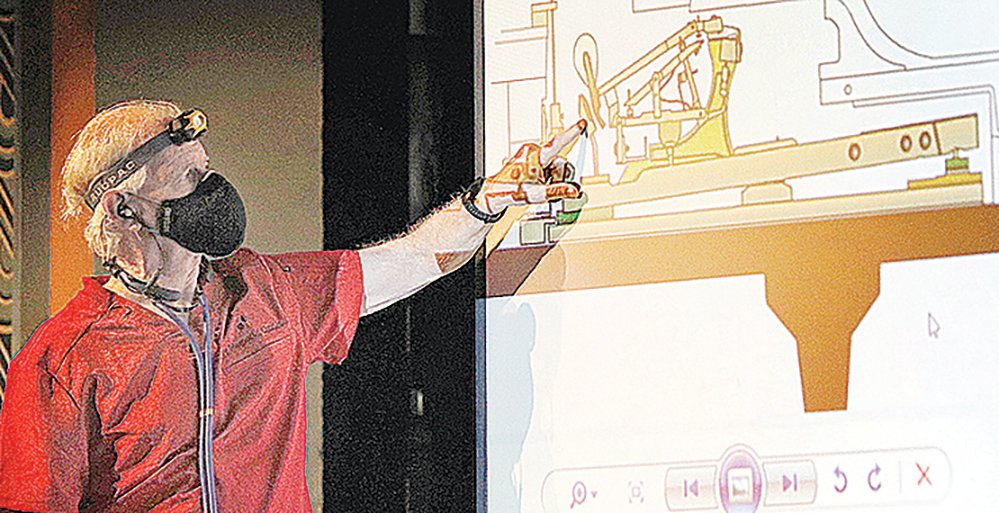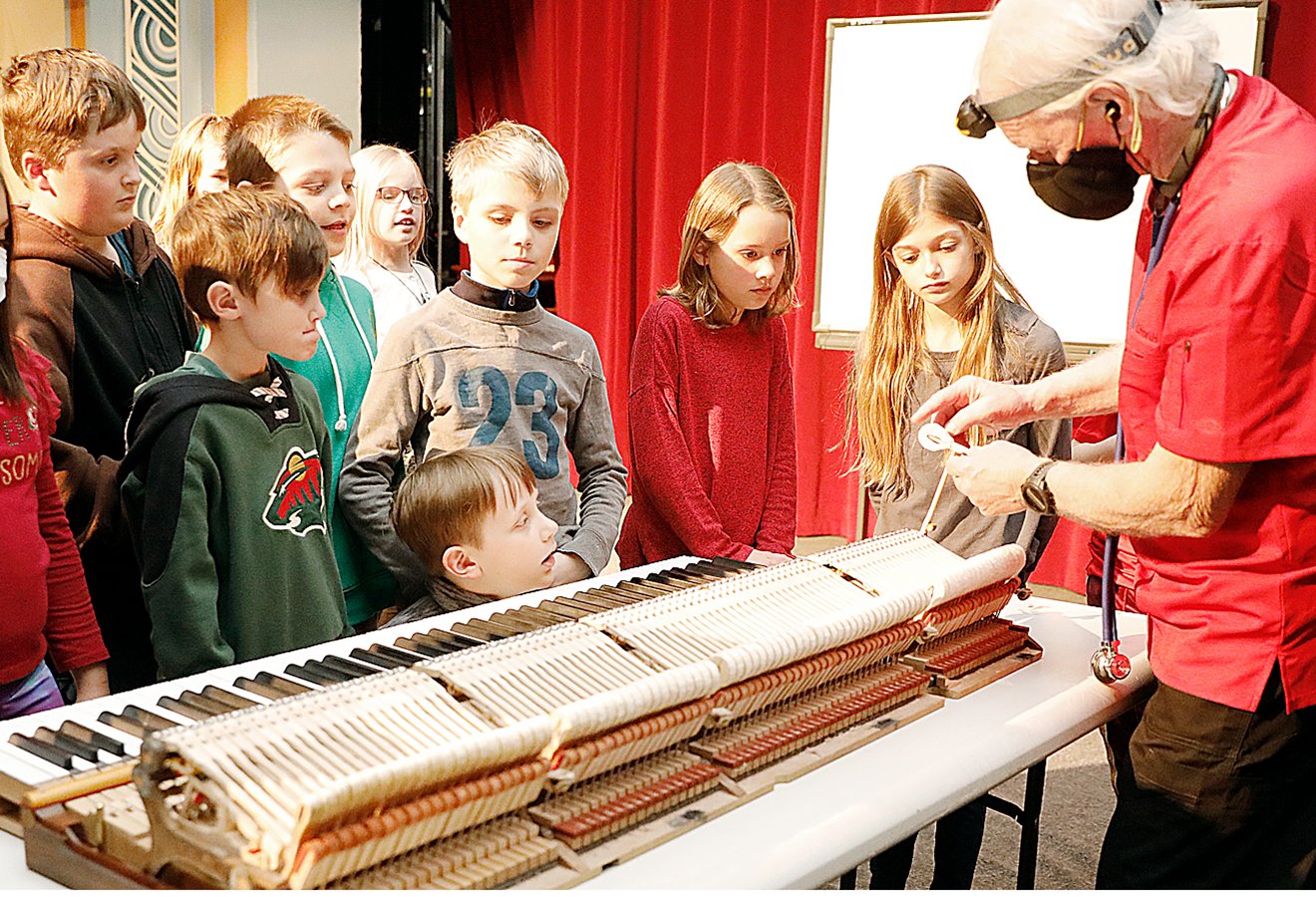Support the Timberjay by making a donation.
Science meets art as music students 'dissect' piano
ELY - Some Washington Elementary school students combined science and art last week in Mike Rouse’s music class. Students in Kindergarten through fourth grade gathered on the stage in the …
This item is available in full to subscribers.
Attention subscribers
To continue reading, you will need to either log in to your subscriber account, or purchase a new subscription.
If you are a current print subscriber, you can set up a free website account and connect your subscription to it by clicking here.
If you are a digital subscriber with an active, online-only subscription then you already have an account here. Just reset your password if you've not yet logged in to your account on this new site.
Otherwise, click here to view your options for subscribing.
Please log in to continue |
Science meets art as music students 'dissect' piano
ELY - Some Washington Elementary school students combined science and art last week in Mike Rouse’s music class. Students in Kindergarten through fourth grade gathered on the stage in the auditorium for a piano dissection.
“Music class for the students is always an adventure,” Rouse said. “Besides singing, listening, and playing various instruments, the students have been learning to read music. This entails many skills, including reading rhythms, recognizing the notes of the treble staff, learning and applying the Italian terms for tempo and dynamics and so on,” he said. “They are looking at and listening to music and learn to be able to describe what they are seeing and hearing in a knowledgeable manner.”
This learning all recently culmulated with an in-depth exploration of “Carnival of the Animals,” composed by Camille Saint-Saens.
“The study of this composition also served as an introduction to the instruments of the orchestra, which the classes will be studying by instrument family groups throughout April and May,” he said.
The first family of instruments studied by the classes was the ‘Keyboard Family’, which includes Rouse’s favorite instrument, the piano.
One of the things the longtime music teacher likes to do is have the students get a close-up look and to touch and feel the instruments.
Last week, after studying and exploring various keyboard instruments, the class looked at an “x-ray” (drawing) of the insides of a piano. The students were then offered not only a chance to play a few notes on the piano, but along with Dr. Rouse (the piano doctor), “dissected” the piano to see what made it work and why the piano could play both “piano” and “forte” simply by regulating how soft or hard you depressed the key.
“Our patient was the school’s 1937 Steinway B. The students were fascinated by the fact that in 15 years, this piano will be 100 years old,” Rouse said.
One student commented, “That piano is older than Mr. Rouse.” The teacher did not confirm nor deny the fact.
“The students were very happy to report that the patient survived the procedure and is in great condition for more classes,” he added. “It was a very fun and exciting day for both the students and teacher. In the coming weeks, the students will be getting a close up look and listen to members of the String Family, the Wind Family, and the Percussion Family.”















